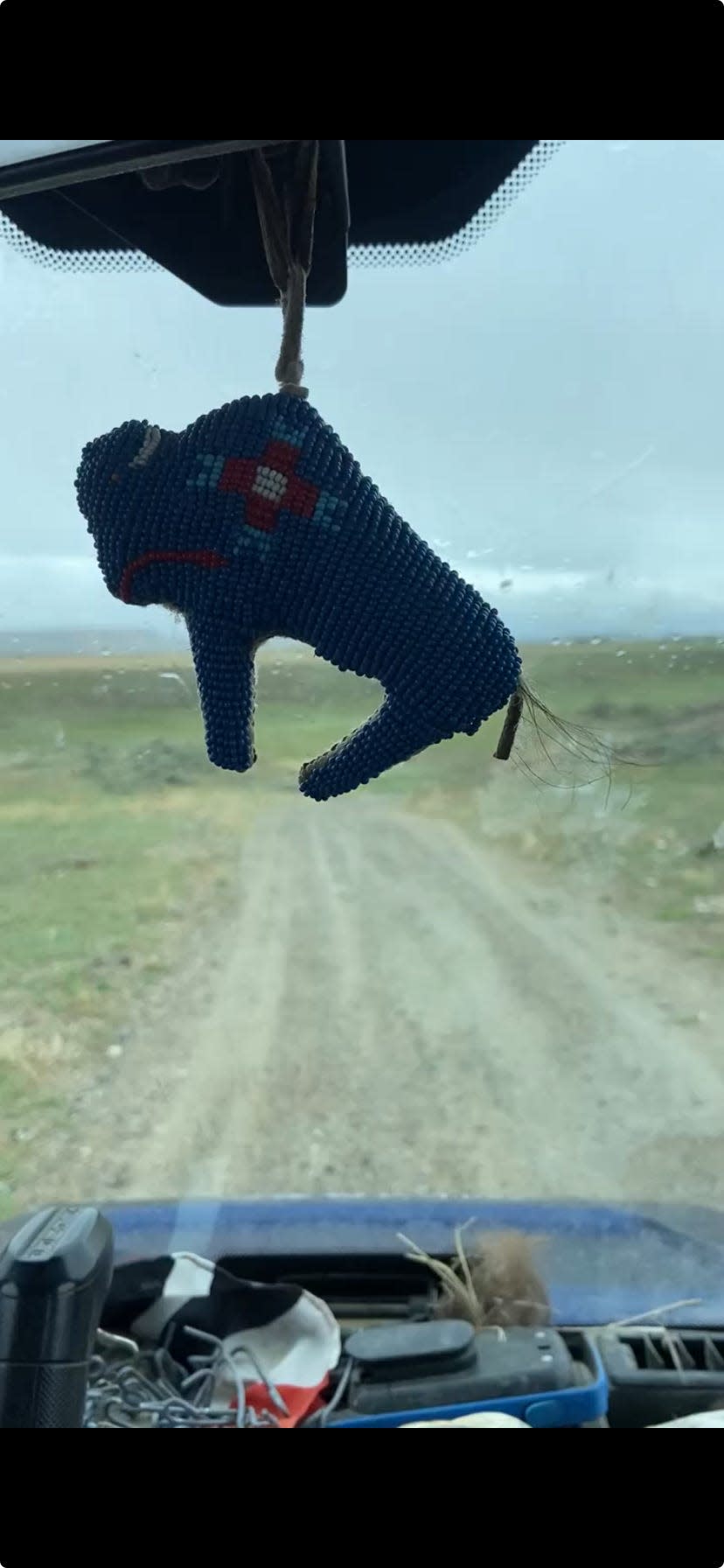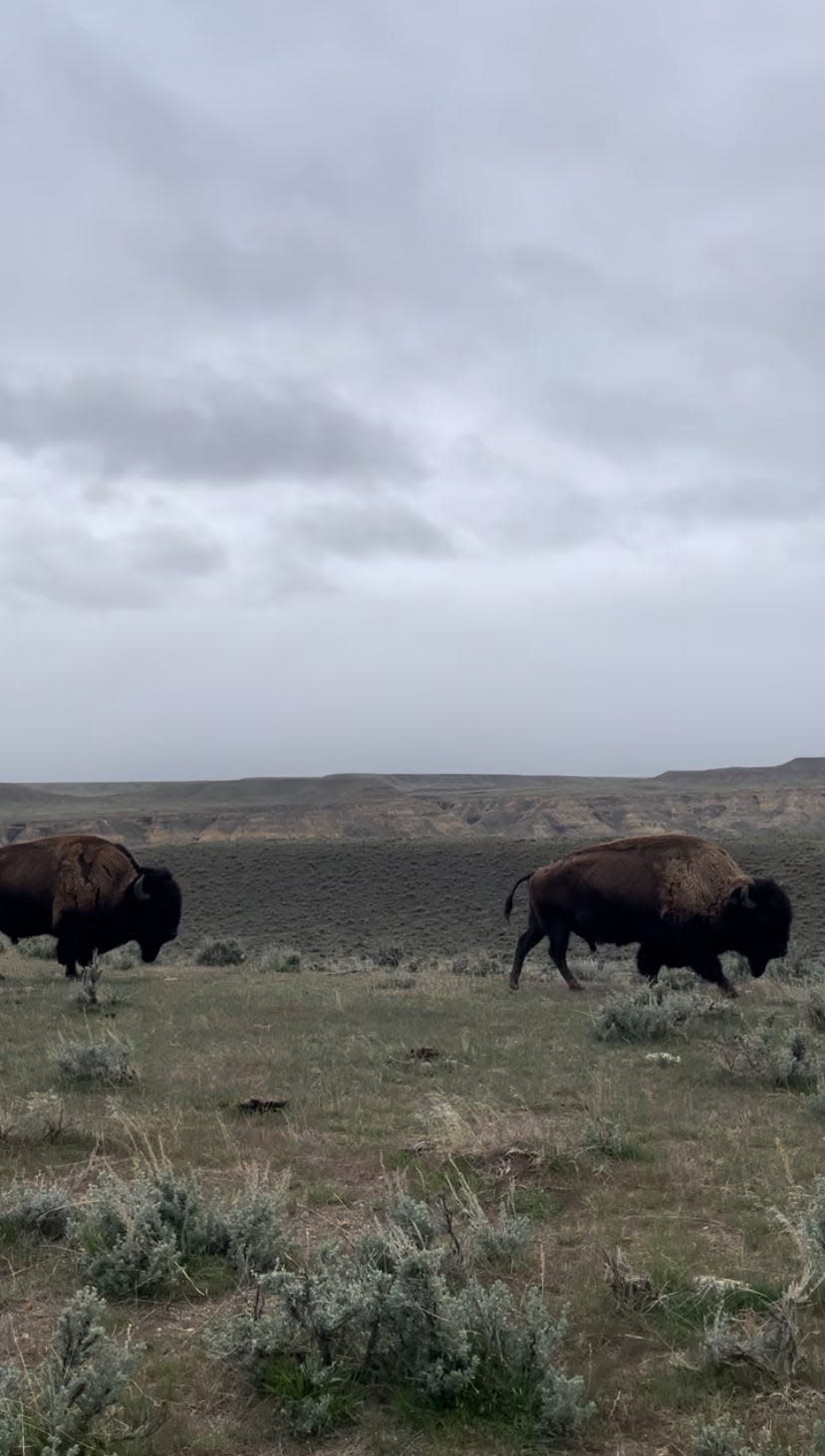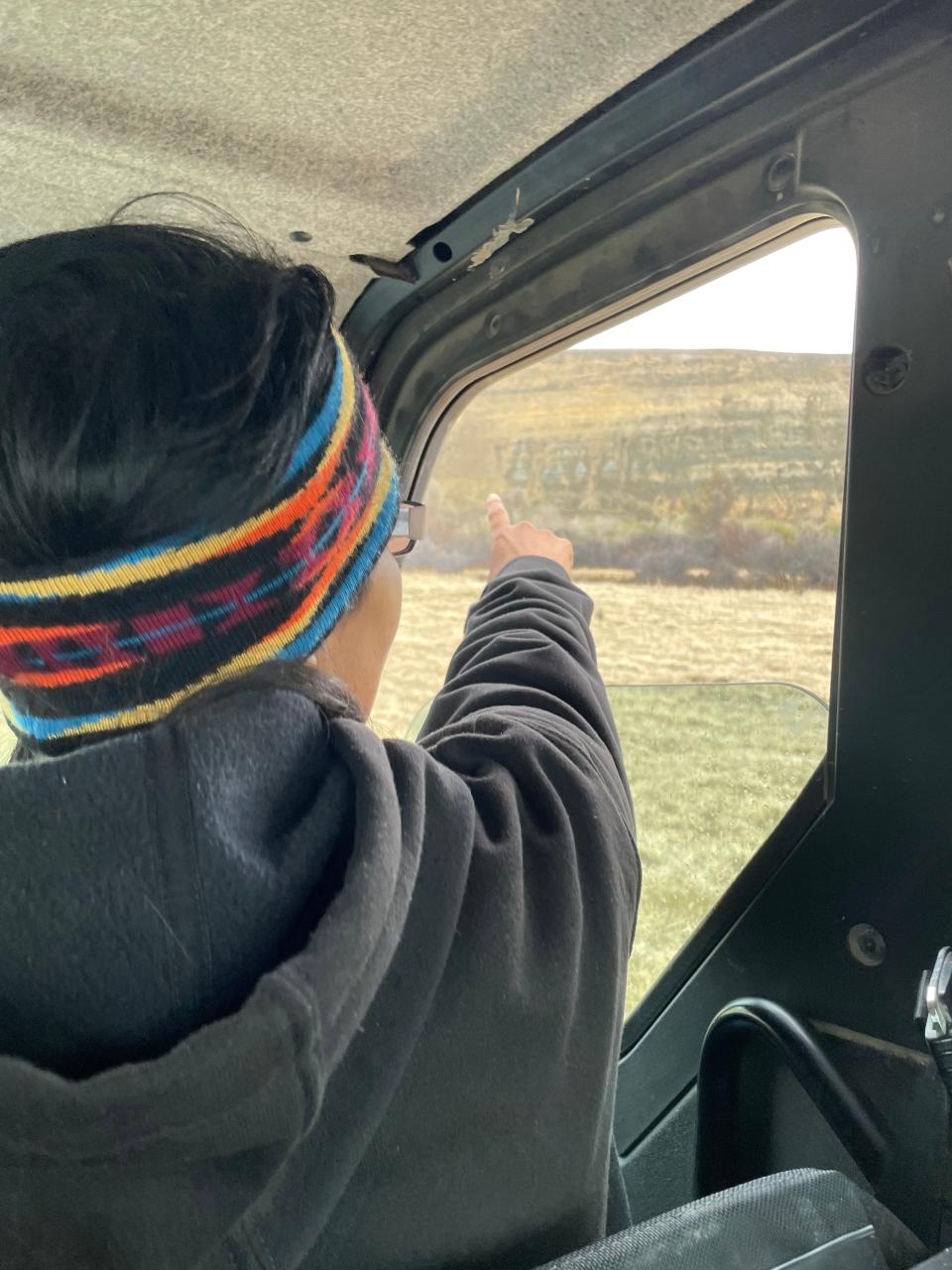Home on the range: inside buffalo restoration on the Wind River Indian Reservation
Deep in the heart of central Wyoming’s 2.2 million-acre Wind River Indian reservation, home to the Eastern Shoshone and Northern Arapaho Tribal nations, a dozen wild buffalo are lazily grazing on green and yellow grass.
Fog swirls over rock faces, patches of sagebrush prairie are starting to look like bogs, and rain soaks through jackets. But Xavier Michael-Young, 22, and a member of the Seminole Tribe of Florida, looks at the buffalo, also known as bison, and says there’s nowhere he’d rather be.
“Buffalo are the coolest animal ever. They’ve been my favorite since I was a kid. Now, to be able to work with them every day is a gift that I’m always grateful to just have,” Michael-Young said, grinning ear-to-ear. “I see myself in all the people that come out here and want to get close to the buffalo.”

Michael-Young is far away from home, serving as the Administrative and Finance Coordinator for the Wind River Tribal Buffalo Initiative (WRTBI). The WRTBI supports the buffalo restorations efforts of the Wind River’s Eastern Shoshone and Northern Arapaho nations, who are both member tribes of the Inter-Tribal Buffalo Council, a consortium of over 80 tribes dedicated to reestablishing bison herds on tribal lands across the United States.
Sign up for Your Vote: Text USA TODAY reporters and the elections team by joining our SMS service.
The passion and urgency behind buffalo restoration stems from the animal’s history, role in America’s ecosystems, and cultural significance to Native Americans. Bison historically numbered over 60 million, with a range that spanned as far as the Carolinas, Northern Mexico, and portions of Canada. Systematic slaughter by European settlers, encouraged by the federal government and carried as a means of warfare against American Indians, reduced the buffalo population to a few hundred by the turn of the 20th century, according to the Smithsonian Institute.
Tribes across the continent traditionally utilized buffalo parts for everything from clothing to cooking containers to glue, and they are central to the rituals and ceremonies of the Eastern Shoshone, Northern Arapaho, and many other tribes. Bison meat has less fat, calories, and cholesterol than beef, and the restoration is part of a broader return to Indigenous food systems, and away from processed foods.
Patti Baldes, a Northern Arapaho tribal member of Northern Paiute and director of the Wind River Native Advocacy Center, says the importance of bringing back the buffalo cannot be overstated due to the animal’s vital role in Indigenous food systems and culture.
More: Native representation in the Wyoming legislature rests on Ivan Posey's shoulders
“They’re a being that’s in all of our lives since birth. We talk about them, pray to them, with ceremonies and songs, but we never really had them.” Baldes said.

A project this ambitious has a dizzying number of moving parts—putting up miles of fence, negotiating land purchases, growing hay, monitoring migration patterns, sourcing buffalo with conservation genetics (many remaining buffalo have been bred with cattle), and then hauling them in from around the country, grant-writing, and more.
The Initiative is also focused on the non-human impacts of bison restoration. Albert Mason, an Eastern Shoshone tribal member, is a graduate research student at the University of Wyoming and works with the WRTBI studying the ecological benefits of bison restoration on land impacted by large-scale cattle grazing.
“It brings back a lot of the animals that we were also seeing dwindle. There are some hawks and ospreys that are kind of synonymous with buffalo and use some of their [buffalo] hair to get their eggs at just the right incubation,” Mason said.

WRTBI founder and executive director Jason Baldes, Eastern Shoshone, sees buffalo restoration as indicative of a cultural revitalization across the continent.
“We want to get kids to really understand what it means to have sovereignty and self-determination,” Baldes said. “Our reservations have been diminished so much that we want to protect and restore what’s been taken from us.”
Cy Neff reports on Wyoming politics for USA TODAY. You can reach him at cneff@usatoday.com or on X, formerly known as Twitter, @CyNeffNews
This article originally appeared on USA TODAY: Big animals, bigger meaning: buffalo restoration on Wind River


